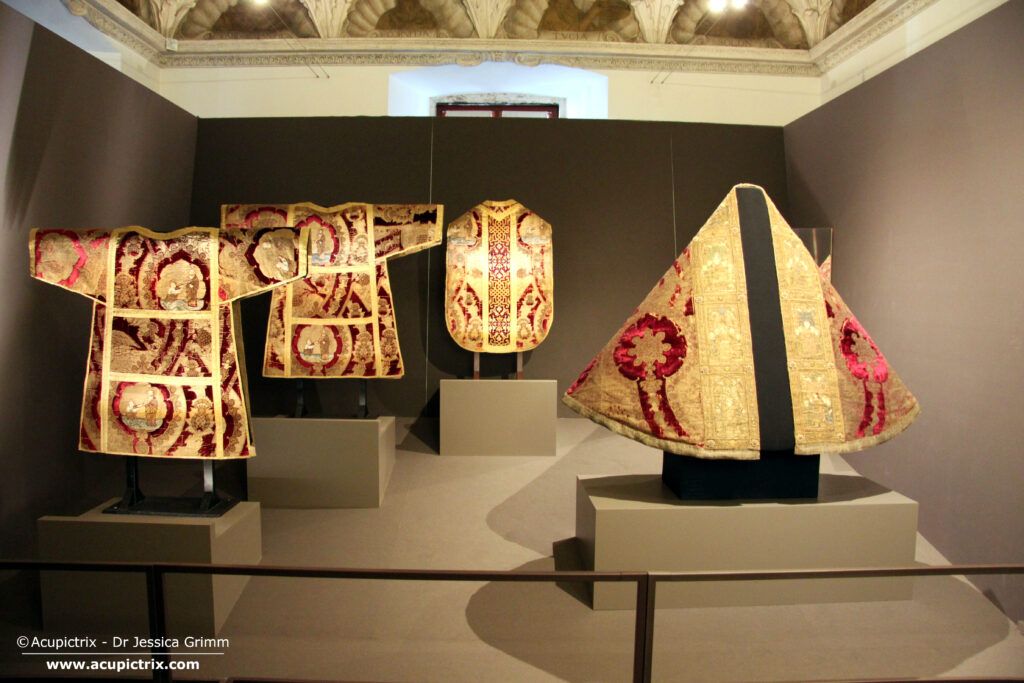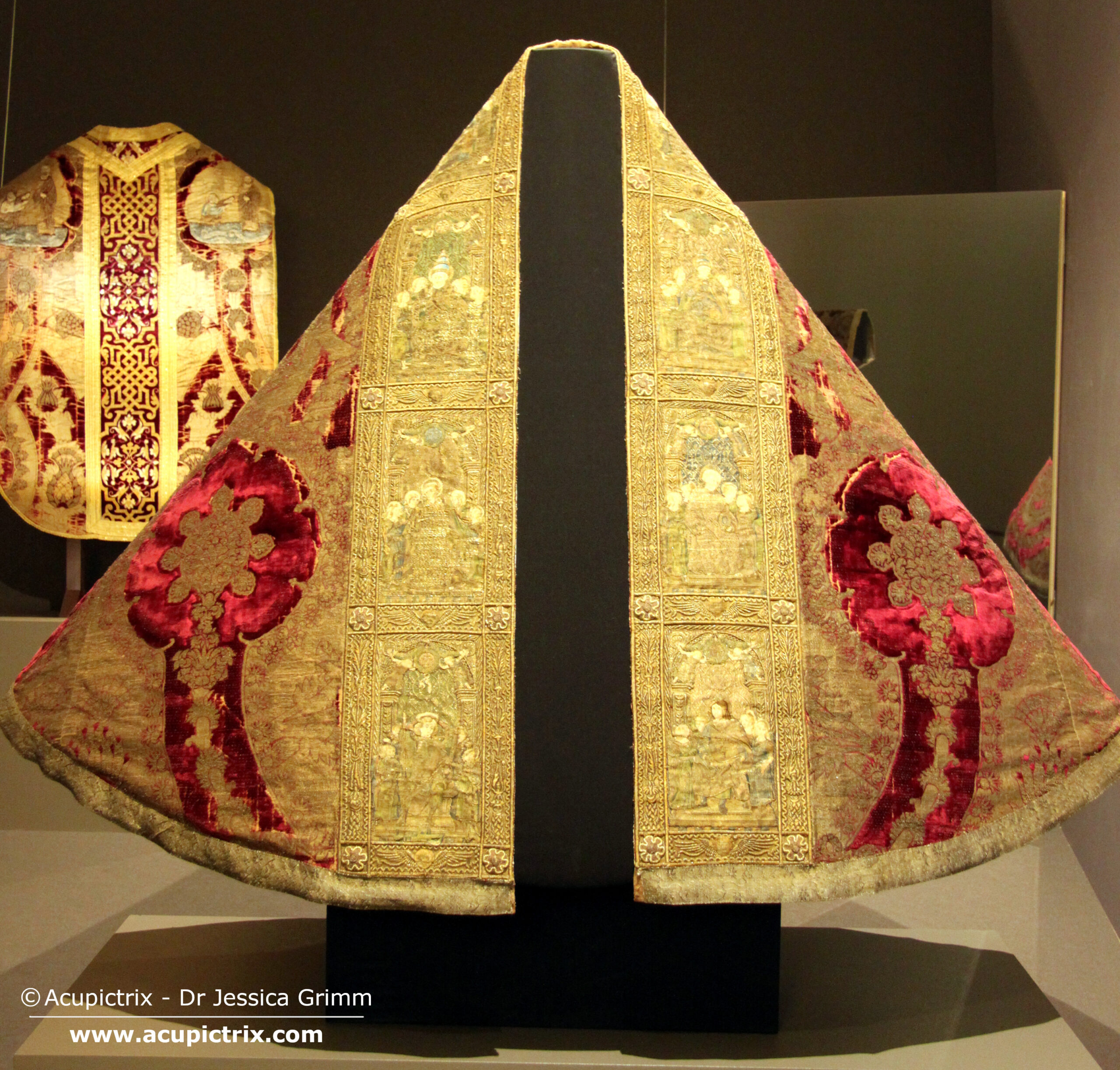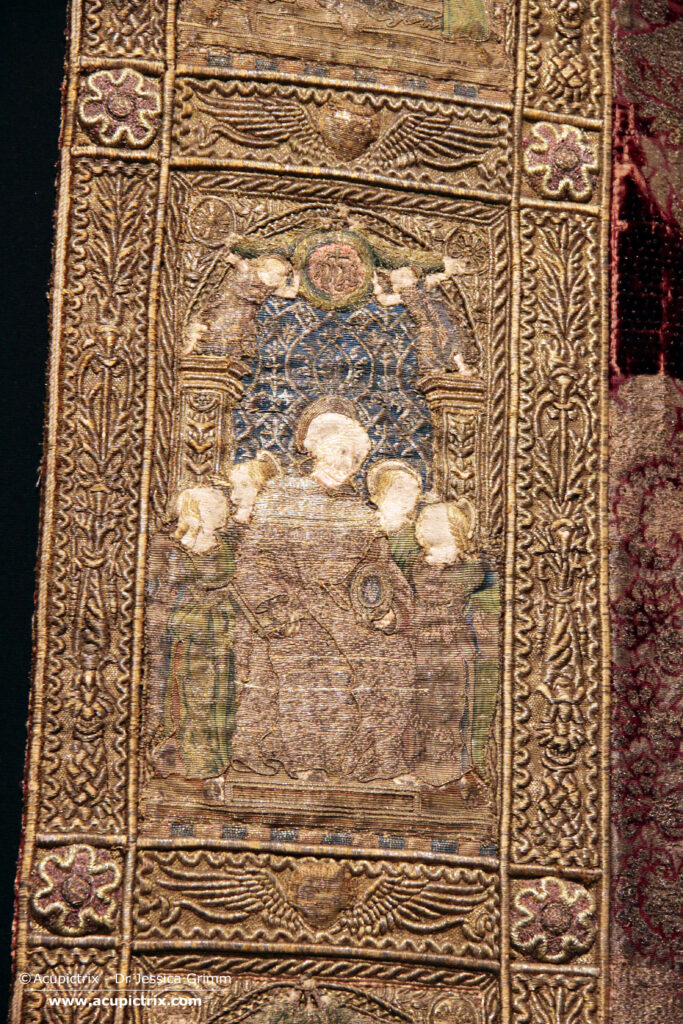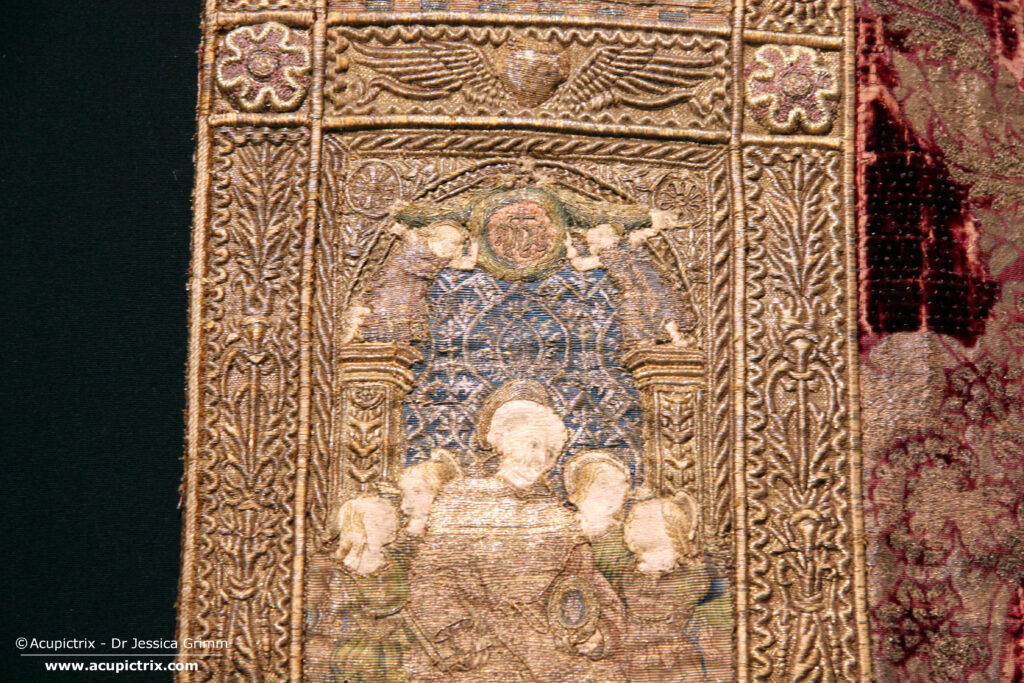This month, we will examine medieval goldwork from Tuscany, Italy. I was fortunate enough to see many of these pieces when they were exhibited at Castello Buonconsiglio in 2019. The series of blog posts is also in preparation for a trip to Tuscany that my husband and I hope to make next month. We’ll kick off the series with the magnificent vestments made for Pope Nicholas V (AD 1397-1455). You can continue your explorations with a blog post on a cope hood inspired by Botticelli and Orphreys by famous Florentine painters.

As you can see from the above picture taken in Castello Buonconsiglio, the vestments made for Pope Nicholas V consist of a dalmatic, a tunicella, a chasuble, and a cope. There are also two soles, three maniples, a chalice veil, a palla, and several fragments. Since we are interested in medieval goldwork from Tuscany, we will only look at the cope. The other vestments don’t sport any goldwork embroidery; their decoration is woven. The vestments are housed in the Museo Nazionale del Bargello in Florence.

This set of medieval goldwork from Tuscany was made shortly before AD 1450 by the towns of Aquila and Siena. A historic document mentioned the total cost of 7000 ducats. The most popular form of this coin contained 0.11 troy ounce of gold. Each coin was thus worth € 301,38 in today’s money. That makes well over 2.1 million for the set of vestments! Exaggerated? Maybe not. The velvet (from Florence) is made with gold threads, too. As Pope Nicholas was a great patron of the arts, it is likely that the textile workers were paid fairly.
Why spend so much money? Pope Nicholas proclaimed a Holy Year in AD 1450. On the occasion of Pentecost, Saint Bernardino of Siena was made a saint in Rome. The saint was born near Siena and buried in Aquila. Hence, these two towns donated the vestments. It is likely that the embroidery was actually made in Siena.

The cope is decorated with eight orphreys along the front opening. Starting from the bottom left (viewer), we see Saint Michael, Francis of Assisi, Pope Gregory the Great, Saint Peter, Saint Paul, Pope Sylvester, Saint Bernardino of Siena, and Saint George. To aid identification, the Latin name of each saint is inscribed on the steps below his throne. Each orphrey is encircled with an elaborately padded frame. The orphreys with their frames measure 35 x 21 cm.

What characterises medieval goldwork from Tuscany? Apart from the already mentioned padded frame around each orphrey, we see figures exquisitely embroidered in very fine split stitch for the faces and the hair (apparently enhanced with a bit of paint) and beautiful or nué for their clothing. We don’t see a cloth of gold in the background made with a diaper pattern. Instead, the embroiderer has imitated a richly patterned golden velvet in blue, green or pink (faded red?).
The gold threads mainly run horizontally but can change direction to emphasise accents. Gold threads are mainly couched down in pairs. The raised effects in the frames are achieved by gimped couching over thick linen padding threads. The gold threads are made by wrapping a gilded strip of silver foil around a yellow silken core. This is similar to modern passing thread.
To achieve a bit more depth, the embroiderers have used slips. Some parts of the design have been appliqued onto the orphrey instead of working them directly onto the embroidery fabric. Equally, defining certain design lines with twist or a single gold thread makes the design easier to read. The embroiderers of Siena were masters of their art!
Literature
Prá, L. Dal, Carmignani, M., Peri, P. (Eds.), 2019. Fili d’oro e dipinti di seta: Velluti e ricami tra Gotico e Rinascimento. Castello del Buonconsiglio, Trento.
